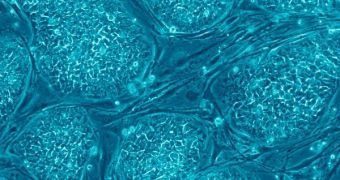Despite the fact that it holds the greatest promises for serious advancements, the field of regenerative medicine is currently one of the areas of science where little public support is recorded. Religious factions and ultraconservative groups with decisional power unjustly oppose this line of research, which could potentially save millions of lives. Therefore, finding sources of stem cells is becoming increasingly difficult, and that's why a newly found source was so welcomed among scientists.
Experts from BioMed Central have managed to identify a way to extract mesenchymal stem cells from the discarded human tissue inside Fallopian tubes, which connect the uterus to the ovaries in the female anatomy. A new study conducted by a research team at the institute has identified the tubes as one of the most potent sources of such stem cells, which, after treatment, can turn into a large variety of different cell types, fit to cure a large number of diseases. A paper detailing the find appears in the latest issue of the open-access Journal of Translational Medicine.
Until now, mesenchymal stem cells could only be obtained from umbilical cords, dental pulp and adipose tissue, but they came in limited supplies. With the discovery of the new source, which, according to the study, can offer significant quantities of stem cells, the amount of this type of cells out there will hopefully increase, giving researchers more material to work with and develop new cures and treatments. Mesenchymal stem cells from the aforementioned sources are able to differentiate into muscle, fat, bone and cartilage cell lineages.
“Human tissue fragments that are usually discarded in surgical procedures may represent important sources of stem cells and their use does not pose ethical problems. This is the first study to demonstrate the isolation, in vitro expansion, and differentiation into muscle, fat, cartilage, and bone of a new rich source of mesenchymal progenitor cells from normal adult hFTs (human fallopian tubes). Tissue fragments of hFTs, which are usually discarded after surgical procedures, may represent a new potential source of pluripotent cells for regenerative medicine,” the authors write in the journal entry.
“The identification of niches of tissue-specific stem cells capable of replacing damaged differentiated cells in the hFTs may contribute to provide the unique environment required for the maintenance of male and female gamete viability, fertilization, and early embryo development and transport to the uterus, altogether necessary for a successful reproductive outcome,” they add.
An abstract of the study can be found here.

 14 DAY TRIAL //
14 DAY TRIAL //